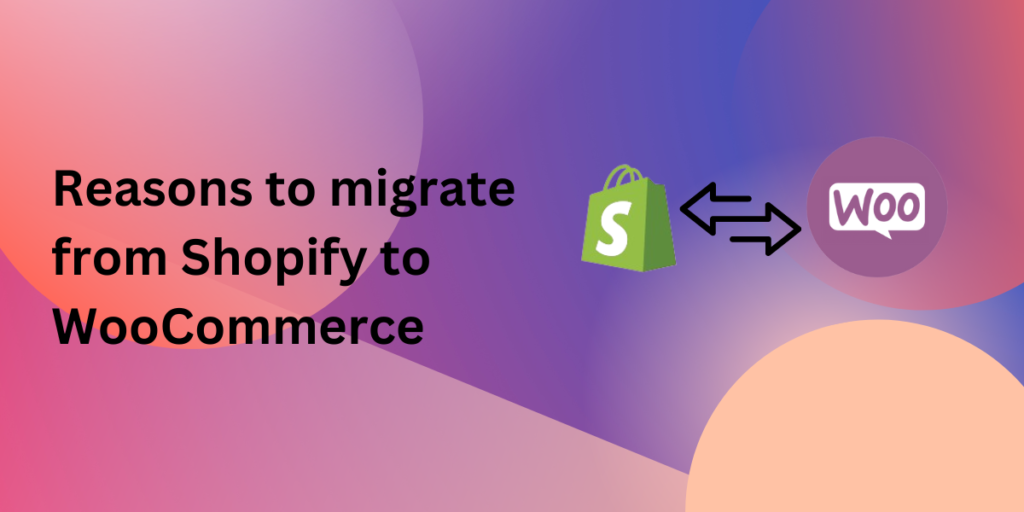If you’re a Shopify user considering alternatives to support your growing business needs, WooCommerce may be the perfect solution. As an open-source eCommerce platform powered by WordPress, WooCommerce offers unmatched flexibility, control, and customization. Shopify is an excellent platform for those starting out, but for businesses looking to expand, cut down on costs, or gain more control over their store, migrating from Shopify to WooCommerce is often a game-changer.
In this article, we’ll explore the key benefits of migrating from Shopify to WooCommerce, including its flexibility, cost-effectiveness, and user control, while addressing why WooCommerce might be the right choice for your eCommerce business.
Also Read About Benefits of Allowing Customers to Upload Files
1. Greater Control and Customization
One of WooCommerce’s biggest advantages over Shopify is its high level of customization. Built on WordPress, WooCommerce provides access to thousands of plugins and themes, allowing you to tailor your store to meet specific business needs and unique branding requirements.
- Open-Source Nature: Unlike Shopify’s proprietary platform, WooCommerce is open-source. This means you have complete control over your store’s code, enabling advanced customization and development opportunities.
- Flexible Design Options: With WooCommerce, you can choose from thousands of free and premium WordPress themes and plugins to customize your store’s look, layout, and functionality. Shopify has a limited number of themes, which can limit your design options.
- Scalability: WooCommerce is highly scalable, making it ideal for stores with plans for rapid growth. As your business grows, you can expand your site’s functionality, optimize the design, and improve the shopping experience without being restricted by a proprietary platform.
2. Cost-Effectiveness
Migrating from Shopify to WooCommerce can be a more cost-effective choice, especially for growing stores.
- Lower Platform Fees: Shopify charges monthly fees depending on your chosen plan, while WooCommerce itself is free. While there are costs associated with hosting, domain registration, and premium plugins, you can optimize these based on your specific needs and budget.
- Fewer Transaction Fees: Shopify imposes transaction fees on sales, especially when using third-party payment gateways, which can add up. WooCommerce, on the other hand, does not have additional transaction fees, which can result in significant savings.
- Flexible Hosting Options: With WooCommerce, you have the freedom to select a hosting provider that suits your budget and performance needs. This flexibility can reduce hosting costs and ensure that your store is optimized for your audience’s demands.
3. Improved SEO Capabilities
SEO is vital for eCommerce success, and WooCommerce, built on WordPress, provides more advanced SEO options than Shopify.
- SEO Plugins: WooCommerce integrates seamlessly with leading SEO plugins like Yoast SEO and All in One SEO, which provide granular control over meta tags, keywords, descriptions, and more. This makes it easier to optimize your content for search engines.
- Blogging and Content Marketing: Since WooCommerce is built on WordPress, which was originally designed as a blogging platform, content marketing options are extensive. With powerful blogging tools and advanced content formatting, it’s easier to engage your audience and improve organic reach.
- Customizable URL Structure: WooCommerce allows for fully customizable URLs, making it easier to structure your store’s pages and improve SEO rankings. Shopify, in contrast, has a fixed URL structure that can sometimes hinder SEO optimization.
4. Enhanced Ownership of Data
WooCommerce offers a significant advantage when it comes to data ownership. Because WooCommerce stores operate on WordPress, you fully own your website data, unlike Shopify, which stores data on its own servers.
- Data Control: Migrating from Shopify to WooCommerce means your store data is stored independently, providing peace of mind with full control over customer information, sales data, and website analytics.
- Advanced Analytics: WooCommerce integrates with advanced analytics tools like Google Analytics and offers detailed reports on sales, customer behavior, and product performance. This level of data ownership and visibility into performance metrics can lead to better-informed decisions.
- Compliance: With control over your data, you can implement data privacy measures that meet compliance requirements such as GDPR or CCPA, helping to build customer trust.
5. Extensive Plugin and Extension Ecosystem
One of the standout reasons for migrating from Shopify to WooCommerce is the ability to access thousands of plugins and extensions, which provide enhanced functionality and customization options.
- Wide Range of Functionality: From payment gateways to marketing tools and customer support features, WooCommerce’s extension library allows you to add functionalities specific to your business needs. Shopify’s App Store, while robust, often comes with recurring subscription fees that can add up over time.
- Integration with Third-Party Tools: WooCommerce easily integrates with a wide range of third-party tools and services, such as CRM systems, email marketing platforms, and shipping providers. This means you can create a cohesive tech stack tailored to your business’s specific needs.
6. Improved Payment Options
Payment gateways are crucial for eCommerce success, and WooCommerce offers unparalleled flexibility in this regard.
- Wide Array of Payment Gateways: WooCommerce supports over 100 payment gateways, allowing you to integrate the best payment option for your customers’ preferences. Shopify, in comparison, imposes limitations on third-party gateways, often requiring users to pay additional transaction fees.
- Zero Transaction Fees: WooCommerce does not impose additional transaction fees on sales, even when using third-party payment processors. This can be a big advantage for businesses looking to maximize their profit margins.
7. Community Support and Resources
The open-source nature of WooCommerce means there’s an active community of developers, users, and resources to support your store’s success.
- Access to Experts and Developers: WooCommerce’s large community provides access to developers and support teams who specialize in WooCommerce customization. This can be highly beneficial if you need assistance with technical adjustments or advanced features.
- Resource Libraries: WooCommerce and WordPress have extensive documentation and tutorials that cover everything from setting up a store to advanced SEO practices, which makes it easy to find guidance and troubleshooting tips.
8. The Migration Process with WooCommerce’s Shopify Importer
WooCommerce offers a migrate Shopify to WooCommerce plugin, making the process relatively straightforward and accessible. This plugin allows you to import products, customers, and orders from Shopify into WooCommerce with minimal effort.
- Easy Setup and Transfer: The WooCommerce Shopify Importer Plugin simplifies the migration process by automating data transfer, reducing manual work, and ensuring accuracy during the transition.
- Retain Critical Data: With the Shopify Importer, you can retain essential customer data, product categories, and order histories, ensuring a smooth transition for your customers and minimizing downtime.
Conclusion
For store owners ready to expand, gain control, and reduce operational costs, migrating from Shopify to WooCommerce is a strategic move. With benefits including enhanced customization, cost-effectiveness, SEO capabilities, and data control, WooCommerce offers the flexibility and freedom to scale and grow. WooCommerce provides an all-in-one solution for building and managing an eCommerce store that’s not only tailored to your needs but also highly optimized for long-term success.
People Also Read About Streamline Your Store Navigation



